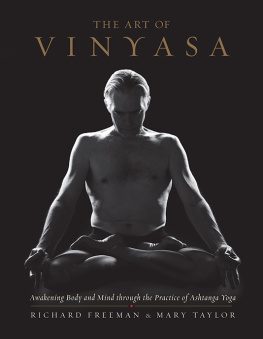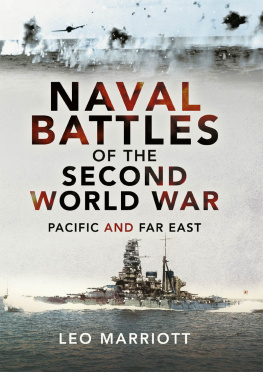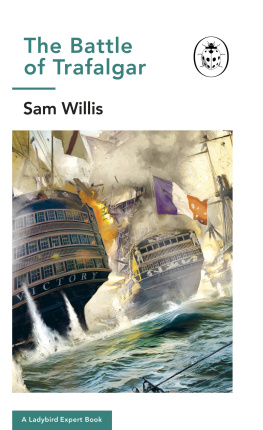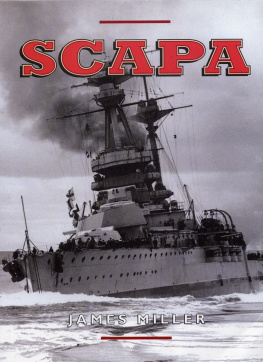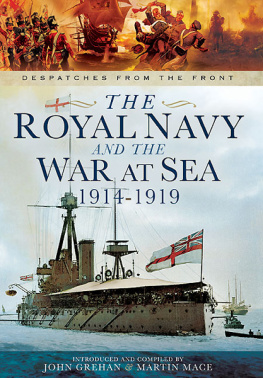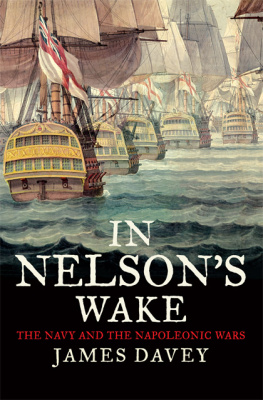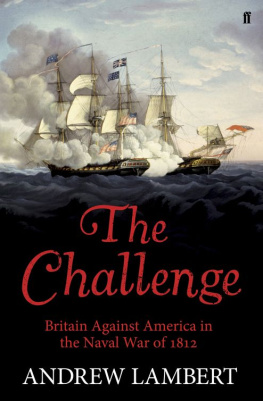Britains Greatest Naval Battles
Richard Freeman
Richard Freeman 2012
Richard Freeman has asserted his rights under the Copyright, Design and Patents Act, 1988, to be identified as the author of this work.
First published 2012 by Endeavour Press Ltd.
This edition published 2019 by Endeavour Media Ltd.
Table of Contents
Introduction
This precious stone set in the silver sea,
Which serves it in the office of a wall,
Or as a moat defensive to a house
Britain's wealth and dominion until the end of the First World War depended crucially on her command of the sea through naval power. No country could challenge her unless it first deprived her of her capacity to rule the waves.
Philip II of Spain, Napoleon and Kaiser Wilhelm II all took up this challenge. On each occasion Britain found herself on the verge of conquest. On each occasion the navy went out to meet the foe and returned victorious. The Spanish invasion force that accompanied the Armada perished in the North Sea and off the coast of Ireland. At Trafalgar Nelson destroyed Napoleon's capacity to mount an invasion. And at Jutland Jellicoe's fleet so terrified the Kaiser that he ordered his ships to remain in port for the rest of the war.
Three great naval battles, each fought in circumstances where the public were in trepidation as to the outcome. In 1588 there was a widespread fear of Elizabeth being replaced by the Catholic Philip. In 1805 the British dreaded the thought of Napoleons all-conquering armies raging over their towns and fields. In 1916 there was a hysterical terror at the thought of German soldiers arriving on British beaches.
But which of these battles was the greatest? This book will answer the question by reviewing the battles and then considering their short and long-term legacies and their ultimate place in Britain's island story.
* * *
In considering which battles to include and how to measure their greatness, we have to step back from the legendary glory of each battle and the heroics of the men who took part to ask ourselves some more fundamental questions. We need to define what greatness means in a naval battle.
First and foremost for a battle to be great, the stakes must be high. The consequences of defeat have to be serious; possibly unthinkable. In other words did the battle really make a difference?
Second, there has to be scale. If neither side threw great resources into a battle then it is hard to see how it can be considered great. The highly significant Battle of the Falklands in 1914 was of critical importance to Britain but involved so few ships that it cannot compete against the mighty struggles considered here.
Third, a great battle should be one which makes great demands on men. The testing of men in battle is one of the factors that leads us to be eternally fascinated by conflict. If men are not stretched beyond what man can bear, somehow their heroics seem diminished.
Can Armada, Trafalgar and Jutland rise to these demands of significance, scale and extraordinary demands of men?
Armada 1588
The rivals
The first rumours of the Spanish Armada had reached England in late 1585 but it was not until two years later that rumour changed to certitude. In the autumn of 1587, Elizabeth prepared herself to defend her realm. Letters went out to the shires ordering their forces to be at one hours readiness. Coastal dwellers were advised to move inland and the hangers-on at Westminster were told to return home and look after their families.
In November Elizabeth held a Council of War to begin serious planning to repel the Armada. Her first task was to select a commander. She turned to her Lord High Admiral. For all his title, Lord Howard of Effingham was no naval man, but he was the Queens cousin and he had served her loyally and discreetly since before her accession. His appointment also gave prestige to the force and ensured that it was led by an aristocrat who would be obeyed by the motley collection of officers he was to lead. There was the wild and wilful Sir Francis Drake, balanced by the equally skilful but less erratic John Hawkyns. Piquancy was maintained by the barely reformed pirate, Martin Frobisher, said to be cruel and duplicitous, and a Captain Thomas Fenner, who was a veteran of Drakes earlier West Indies raids. Howard leavened this combustible mixture with a couple of his relatives: his nephew Lord Sheffield, who had served in the army in the Netherlands, and the youthful Lord Thomas Howard, who as yet had no experience of the sea.
It was one thing to appoint a commander, but quite another to authorise him to act. Elizabeth was to prevaricate over her intentions until the very eve of the sighting of the enemy fleet. She issued orders and countermanded them. She denied provisions to the fleet and she withheld powder and shot. Her natural caution and her innate parsimony almost cost her her crown.
The first indication of troubles to come appeared straight after Howards appointment. Elizabeth gave him orders to take thirty ships to keep watch on the Spanish coast, but within days she reduced their crews by half. With Drake pressing hard for pre-emptive action a compromise was reached. He could attack the Spanish ships in their homeports and, if he met the Armada, he was permitted to obstruct its advance but no risks were to be taken.
While Elizabeth prepared for war she hoped for peace. In February 1588 she despatched her peace commissioners under the Earl of Derby to treat with the Duke of Parma in the Netherlands. As governor of the Spanish Netherlands Parma was to supply a large part of the invading force that formed the military side of the Armada.
Just months before the Armada was due to depart Philips leading admiral, Santa Cruz, died aged 61. In his place Philip selected the Duke of Medina Sidonia, a man without any maritime experience. Philips choice was probably determined by his need for a man of authority and high rank yet who would also do as he was told. Sidonia was under no illusions as to his qualifications for the post and begged to be passed over: I possess neither aptitude, ability, health, nor fortune for the expedition, he told Philip. .
In May, Elizabeth once more tightened her grip on Howards fleet when she forbade him to go out in search of the Armada. On a short lead, he was told not to go beyond the entrance to the Channel. At the same time his supplies were cut to one month. Elizabeth was now running the serious risk of her fleet being taken by surprise just when it was almost out of victuals.
Elizabeths commanders became increasingly frustrated at her strategy. They preferred a pre-emptive attack on the Armada while in port. Hawkyns urged that [we] seek our peace by a determined and resolute war. . But it was all too late. Unknown to the English, the Armada had already put to sea.
Englands response to the Armada finally took shape when Howard arrived at Plymouth on 23 May where he raised his flag in the Ark Royal. Not being permitted to go out in search of the Armada, all his fleet could do was to patrol in local waters and wait. Back in Spain Philip ordered Parma to keep the negotiation alive till my Armada appears. At that point he was to break off the talks and replant the Catholic religion on the soil of England. .
The Armada approaches
The Armada was more a troop convoy than a battle fleet. The 130 ships were carrying over 30,000 men of whom only about 8000 were seamen. The bulk 19,000 were soldiers, and there were also around 3000 galley slaves. Sidonias orders were clear. He was to avoid battle as far as he could and pass up the Channel to Margate, where he was to join Parma. If battle were unavoidable Sidonia was reminded that, although the English will seek to fight at long range, he was to draw him to close quarters.
Philip had set Sidonia the task of fighting his way up the Channel against an English fleet of 197 ships and around 18,000 seamen. True, most of these were not fighting ships, yet it was still a formidable force. But it was not tonnage that was to prove decisive. The Spaniards were bringing heavy, slow, high-castled ships of low speed and manoeuvrability. Against these the English would mount low, fast and highly manoeuvrable vessels an advantage that would manifest itself from the very first day.
Next page


